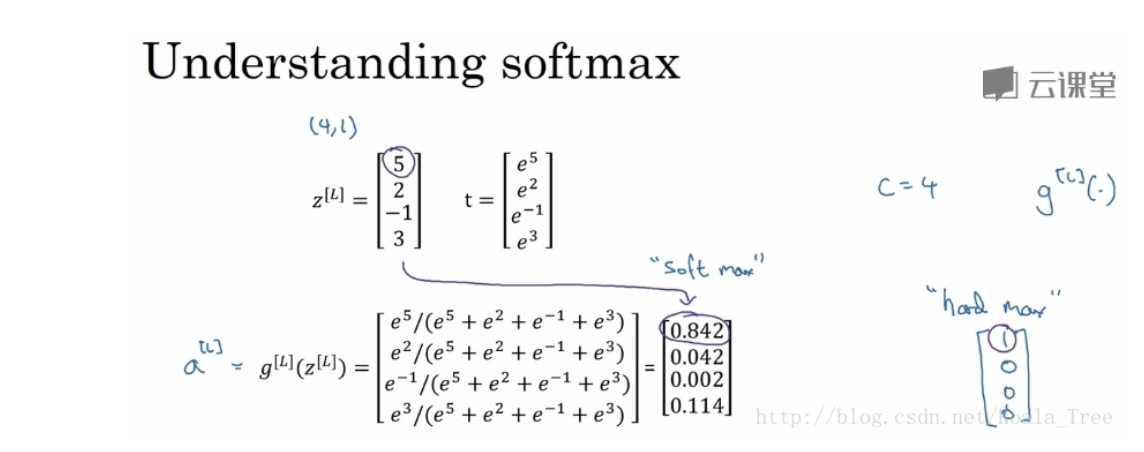一、准备工作
1、MNIST概念
是一个识别手写数字图片的计算机视觉集,它包含各种手写数字图片和每张图片对应的标签
2、softmax回归
softmax回归是logistic回归的一种,它是多元分类(包含二分类)。
sotfmax回归可以把多分类任务多输出转换为各种类别的可能概率,把最大概率值对应的类别作为输入样本的输出类别预测
sotfmax激活函数公式:
z[l]=W[l]a[l]+b[l]
g(z[l])=e(z[l])
理解sotfmax:

sotfmax的loss function:
单个样本 L(ŷ ,y)=∑yjlogŷj, j=[1,...,x] y为标签值,ŷ为预测概率,x为输入特征数量
样本集J(w[1],b[1],…)=1/m∑L(ŷ (i),y(i))
sotfmax梯度下降公式: ∂J/∂z[L]=dz[L]=ŷ −y
3、softmax数据集分析
训练样本:60000个(mnist.train),其中55000个用于训练,5000个用于验证
测试样本:10000个(mnist.test)
每一个MNIST数据单元包含两部分:图片(mnist.train.images)和标签(mnist.train.labels),每张图片包含28像素X28像素,用向量表示长度是28X28=784,因此图片(mnist.train.images)为[60000, 784]的张量,第一个维度用了索引图片,第二个维度用来索引每张图片的像素点,标签介于0-9的数字,向量化表示为[1,0,0,0,0,0,0,0,0],因此标签mnist.train.labels)为[60000, 10]的张量
二、实现回归模型
import tensorflow as tf from tensorflow.examples.tutorials.mnist import input_data mnist = input_data.read_data_sets('MNIST_data/', one_hot=True) # 输入特征占位 x = tf.placeholder('float', [None, 784]) # 权重和偏置值 W = tf.Variable(tf.zeros([784, 10])) b = tf.Variable(tf.zeros([10])) # 预测值 y = tf.nn.softmax(tf.matmul(x,W) + b) # 标签占位 y_ = tf.placeholder('float', [None, 10]) # 计算损失函数 cross_entropy = -tf.reduce_sum(y_*tf.log(y)) # 梯度下降 train_step = tf.train.GradientDescentOptimizer(0.01).minimize(cross_entropy) # 初始化所有变量 init = tf.global_variables_initializer() with tf.Session() as sess: sess.run(init) # 开始训练模型 for _ in range(1000): batch_xs, batch_ys = mnist.train.next_batch(100) sess.run(train_step, feed_dict={x: batch_xs, y_:batch_ys}) # 评估模型效果 correct_prediction = tf.equal(tf.argmax(y,1), tf.argmax(y_,1)) accuracy = tf.reduce_mean(tf.cast(correct_prediction, 'float')) print(sess.run(accuracy, feed_dict={x: mnist.test.images, y_:mnist.test.labels}))